Archaeology << `ahr` kee OL uh jee >> is the scientific study of the remains of past human cultures. Archaeological research is the chief method available for learning about societies that existed before the invention of writing about 5,500 years ago. It also adds to our knowledge of ancient societies that left written records.
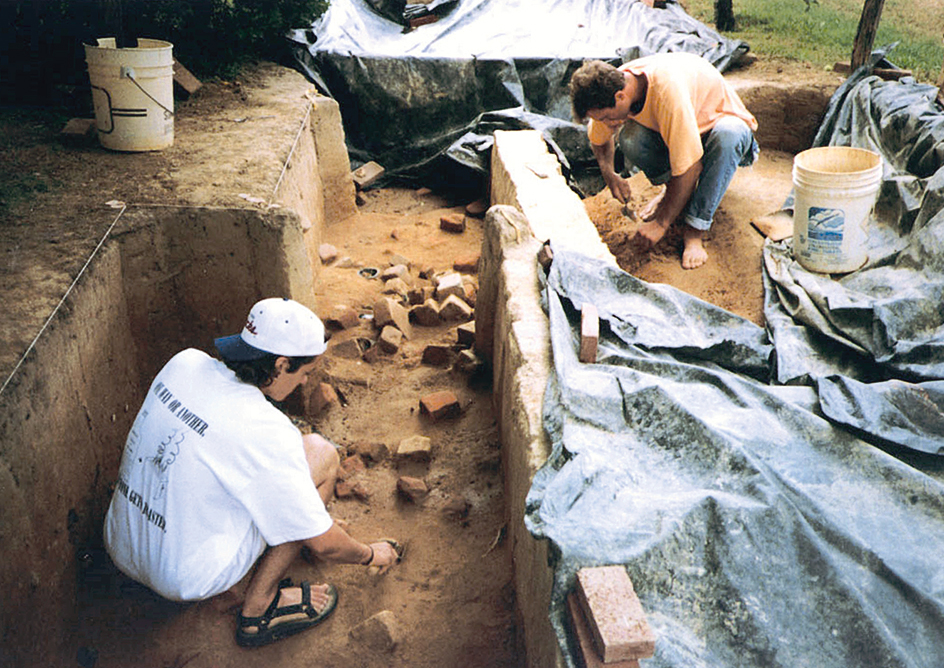
Archaeologists investigate the lives of early people by studying the cultural remains they left behind. Such remains can include buildings, artwork, tools, or pottery. Archaeologists also examine the surroundings and associations of the remains. The surroundings can provide information about how the remains were used. The preserved residues from foods, such as bones and plant parts, can also reveal much about how ancient people lived.
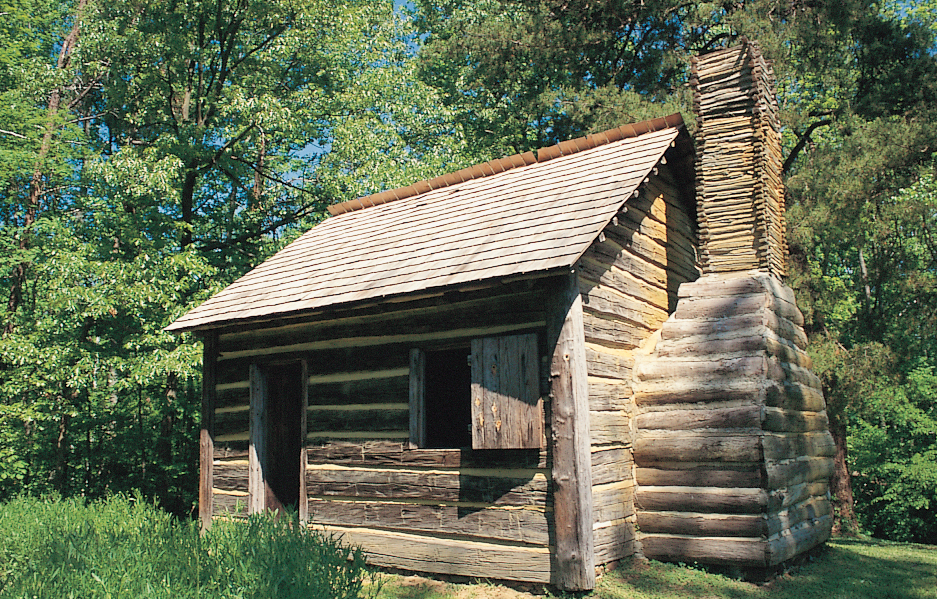
Archaeology in the Americas and in Europe is considered a branch of anthropology, the scientific study of human culture. Some archaeological investigations are closely linked to history. However, historians mainly study events in the past recorded in written documents.
Archaeologists look for information about how, where, and when cultures developed. Like other social scientists, they search for reasons why major changes have occurred in certain cultures. Some archaeologists try to understand why ancient people stopped hunting and started farming. Others develop theories about what caused people to build cities and to set up trade routes. In addition, some archaeologists look for reasons behind the fall of early civilizations, such as the Roman Empire. Still others examine why large cities of the Maya were abandoned around A.D. 850.
What archaeologists study
Archaeologists examine any evidence that can help explain how people lived in the past. Such evidence ranges from the ruins of a large city to a few stone flakes left by someone making a stone tool long ago.
The three basic kinds of archaeological evidence are artifacts, features, and ecofacts. Artifacts are any objects made by human hands. An artifact can be a pyramid, a point chipped from flint, or a ceramic pot. It can also be a variety of other items made from a wide range of materials. Features are evidence of past human activities visible as disturbances in the earth. Such disturbances can be produced by people digging pits for storage, building a house or tomb, or constructing canals for irrigation. Unlike artifacts, features cannot be separated from their surroundings. Ecofacts are natural objects found with artifacts or features. Ecofacts reveal clues about past environments and how ancient people utilized resources. For example, charred seeds and animal bones tell archaeologists about the foods of ancient peoples, Preserved pollen can provide evidence about vegetation and climate changes over time.
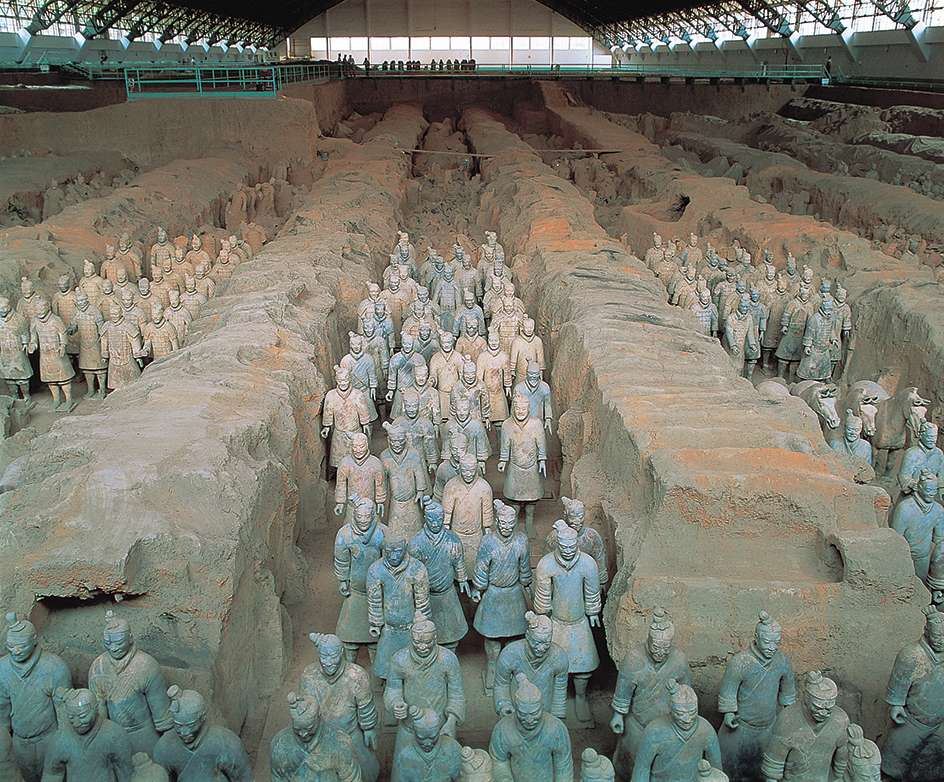
Any place where archaeological evidence is found is called an archaeological site. To understand the people who occupied a site, archaeologists must study the artifacts, features, and ecofacts found there. For example, American archaeologists discovered flint spearpoints among the bones of buffalo at the Folsom site in New Mexico. These artifacts showed that ancient peoples had reached the New World at least 10,000 years ago.
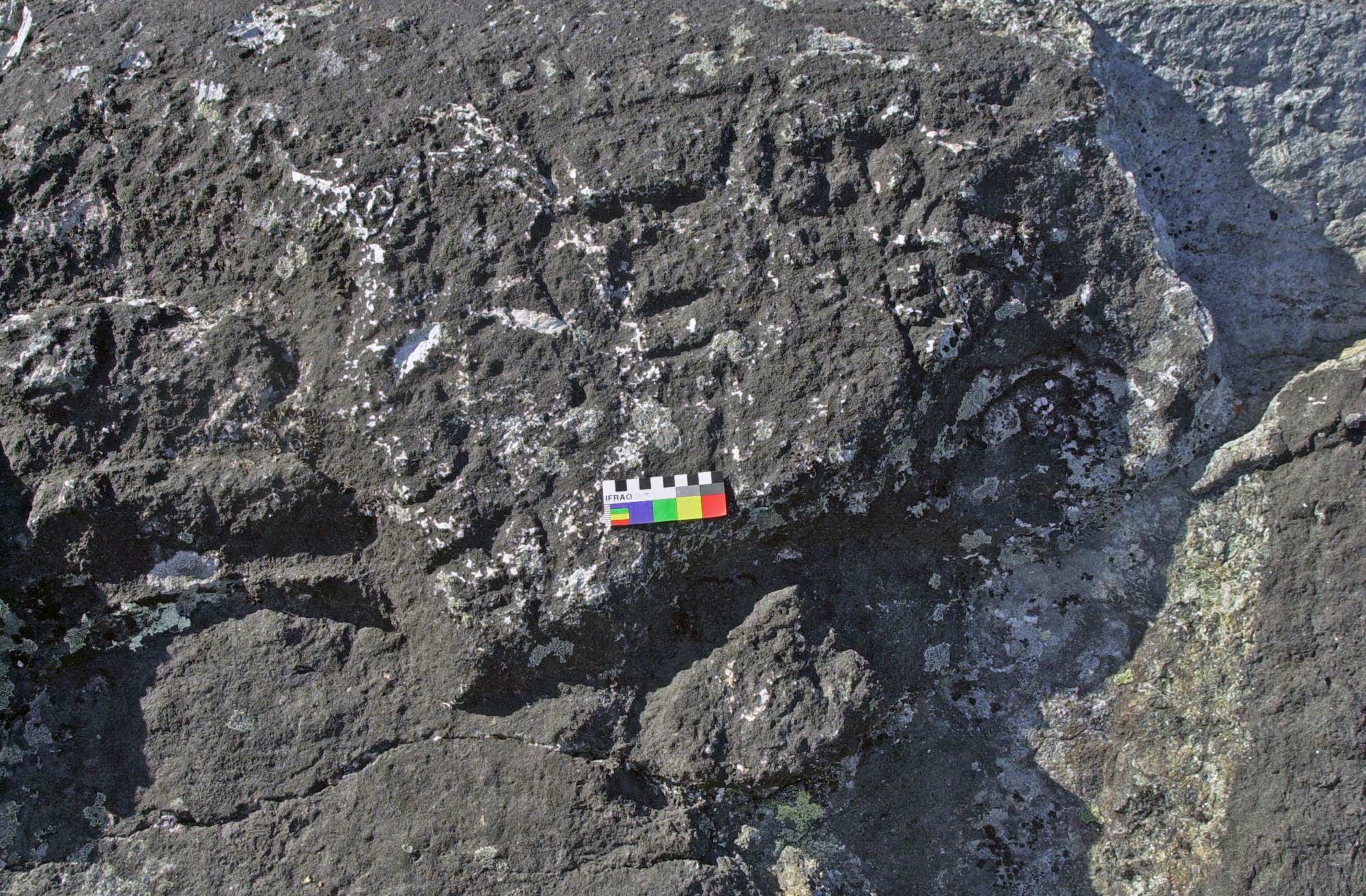
If objects are buried, their position in the earth also interests archaeologists. The scientists study the layers of earth and rock to understand the conditions that existed when the objects were placed there. In some places, archaeologists find many levels of deposits called strata. The study of strata, called stratigraphy, developed from the study of rock layers in geology.
How archaeologists gather information
Archaeologists use special techniques to gather evidence precisely and accurately. They also maintain detailed written records, photographs, maps, and plans of sites because archaeological research actually destroys much of the site.
Locating sites
is the first job of the archaeologist. Sites may be aboveground, underground, or underwater. Underwater sites include sunken ships as well as entire towns that have been submerged.
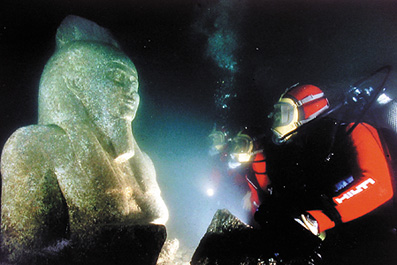
Some large sites are located easily because they are clearly visible. Others can be traced from descriptions in ancient stories or other historical records. Such sites include the pyramids in Egypt and the ancient city of Athens in Greece. Some less obvious sites have been discovered accidentally by people who are not archaeologists. In 1940, for example, four children in search of their dog found the Lascaux Cave in southwestern France. The cave has prehistoric wallpaintings. Many important discoveries have been made by archaeologists who searched tirelessly over many years for a specific site. Working in this way, an English archaeologist named Howard Carter discovered the treasure-filled tomb of the ancient Egyptian king Tutankhamun in 1922.
Archaeologists use systematic methods to discover sites. The traditional way to find all the sites in a region is through a foot survey. In this method, archaeologists space themselves at measured distances and walk in preset directions. Each person looks for archaeological evidence, such as bits of flint or pottery fragments, while walking. Archaeologists use this method when they want to know where sites do not occur as well as where they do. For example, they might use it to confirm that sites in a particular region occur on hilltops but never in valleys.
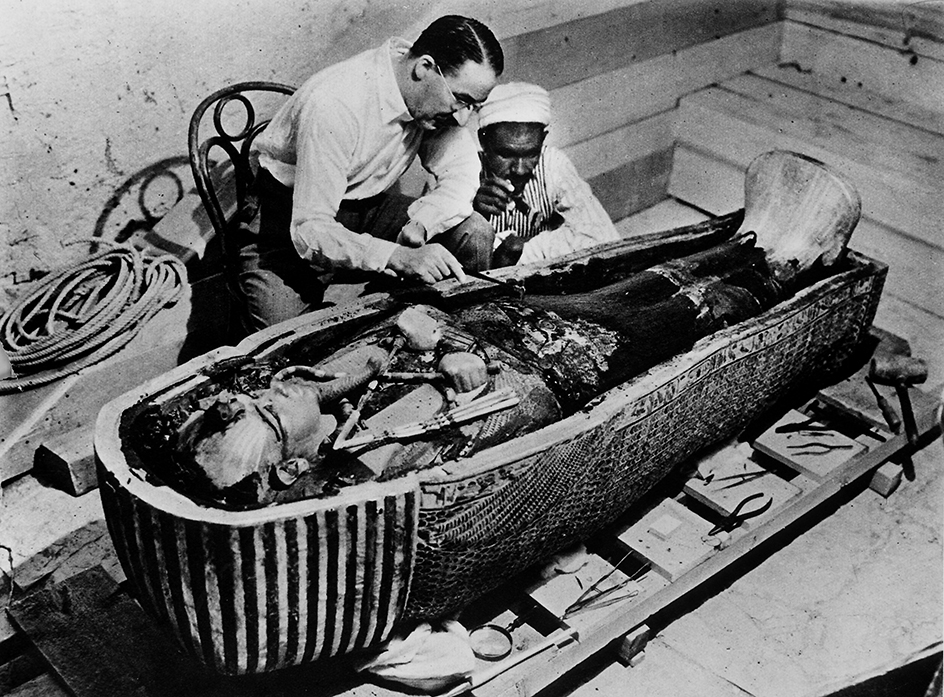
Archaeologists use a variety of methods to help discover sites that have been covered by natural forces, such as floods or blowing sand. The same methods help them find sites obscured by human activities, such as farming. Remote sensing is a common technique used by archaeologists. Remote sensing involves the use of instruments to observe and record information from a distance. Aerial photography, for example, can reveal variations in vegetation that indicate the presence of an archaeological site. Plants that are taller in one area of a field may be growing over an ancient grave or irrigation ditch. Plants that are shorter may be growing in shallow ground over an ancient building or road. Archaeologists may locate sites with infrared (heat detecting) imaging. They may also use photographs taken from orbiting satellites. On the ground, remote sensing techniques, such as ground-penetrating radar, can reveal buried structures or graves. Even simple metal detectors can be used to detect buried metal artifacts.
Surveying sites.
Archaeologists begin to study a site by describing it and plotting the location on a topographic map. A topographic map is a map showing surface features. Handheld tools called Global Positioning System (GPS) devices enable archaeologists to determine precise locations through readings obtained from satellites. Archaeologists make detailed notes about the condition of the site and the kinds of evidence visible on its surface. They also take photographs of the site.
Archaeologists make maps of most sites they find. The type of map drawn depends on the importance of the site, the study’s goals, and the time and money available. In some cases, simple maps are made after pacing off distances or using a measuring tape. In other cases, a special instrument called a transit is used to survey the site carefully. Today, many archaeologists use a total data station, a device utilizing laser and computer technology, to rapidly survey and map a site.
After making a map, the scientists collect artifacts from the surface of the site. They divide the surface into a grid pattern of squares and examine one square at a time. The locations where artifacts are found are recorded on the map.
Excavating sites.
Archaeologists dig carefully for buried remains in a process called excavation. The method of excavation depends partly on the type of site. The archaeologist must use precise techniques and careful observation to determine the surroundings and association of buried artifacts and features. For example, archaeologists working in a cave might divide the floor and the area in front of the cave into square units. They would then excavate each unit separately. At large sites, excavation may be limited to certain areas. Other considerations that frequently determine the excavation method include the climate and soil at the site. Today, archaeologists often expose broad areas of a site in a technique called open area or block excavation so the patterns of an ancient settlement can be detected.

Tools used in excavation range from backhoes and other heavy equipment to shovels and paintbrushes. The most common tool used is the trowel. A trowel is a small, flat, pointed tool often used in bricklaying. A trowel is used to carefully remove earth so that artifacts and features can be found in place, carefully exposed, and documented. In most excavations, archaeologists screen excavated deposits through wire-mesh sieves to recover small artifacts and ecofacts. They also collect soil samples to be analyzed in a laboratory. Soil analysis can find microscopic pollen grains or charred plant remains. Chemical analysis of the soil can also detect hidden evidence of human activities.
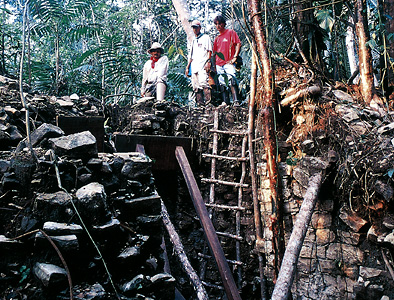
Working underwater.
Archaeologists who work underwater use many methods adopted from land archaeology. Aerial photography over clear water may reveal the outlines of sunken harbors and towns. A method called sonar scanning helps detect underwater objects by the reflection of sound waves. In addition, divers use metal detectors to uncover metal objects. Photographic maps of sites can be made from submarines or by divers carrying underwater cameras. Archaeologists work at underwater sites in diving chambers. They sometimes use balloons to raise large objects to the surface for further study.
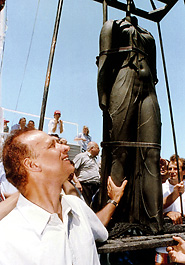
Some underwater sites require extraordinary measures. Archaeologists working in rough waters to examine the French ship La Belle, which had sunk off the Texas coast in the 1700’s, exposed the site by building a giant steel enclosure around it. After the ocean water was pumped out, they could begin excavation on the fragile wreck.
Recording and preserving evidence.
Archaeologists describe, photograph, and count the objects they find. They group the objects according to type and location. For example, broken pieces of pottery, called potsherds, are bagged together by excavation unit and level. This collection then goes to the field laboratory to be cleaned and labeled. Some artifacts, such as knives or spearpoints, should not be washed. Washing removes residues, such as fat or blood. Microscopic or chemical analysis could identify the residues and indicate how the artifact was used.
At the field laboratory, archaeologists must take special care to preserve objects made of such materials as metal and wood. For example, rust on a metal object must be removed without damaging the surface. Water-soaked wooden objects may crack or lose their shape when exposed to the air. These objects must be kept wet until specialists called conservators can preserve them.
How archaeologists interpret findings
Archaeologists follow three basic steps in interpreting the evidence they find. Those steps are classification, dating, and evaluation.
Classification.
Archaeologists look for patterns of distribution of artifacts in space or through time. To find these patterns, archaeologists must first classify artifacts into groups of similar objects.
Typology is the most common approach in classification. Artifacts are usually first sorted into groups based on their shape. Artifacts grouped by shape are known as morphological types. Early people often made things in distinctive shapes during certain periods. They also may have used distinctive manufacturing methods. From the shapes of artifacts and how they were made, artifacts can be sorted into temporal types. Archaeologists use temporal types to construct a sequence that reflects changes in the style or manufacture of artifacts over time. A sequence of different temporal types from a region reflects cultural change through the years. Other studies, such as the microscopic examination of a blade or residues on a potsherd, can determine functional types. Functional types reflect how people used the artifacts.
Dating
of archaeological objects is called archaeometry. The methods of archaeometry are divided into two major types, relative dating and absolute dating.
Relative dating
gives information about the age of an object in relation to other objects. Thus, relative dating methods produce only comparisons, not actual dates. For example, archaeologists can determine the relative ages of bones found at a site by measuring their fluorine content. Fluorine from underground water gradually replaces other elements in bones. As a result, older bones contain more fluorine.
Absolute dating
determines the age of an object in years. There are many absolute dating methods. The method used in a specific case depends mainly on the type of object being dated.
The most widely used dating method is radiocarbon dating. This method requires organic material—that is, something that was once living. Objects suitable for radiocarbon dating include plant parts, charcoal from cooking pits, bone, and shells. Two types of radiocarbon dating are available to archaeologists today. Traditional radiocarbon dating is less expensive to perform but it requires several grams of organic material. Sometimes, only a small amount of material is available. Perhaps only a little material can be recovered from a site, or only a tiny sample can be removed from a fragile artifact. In these cases, scientists use a dating method called accelerator mass spectrometry. See Radiocarbon.
Other absolute dating techniques have more narrow applications. Potassium-argon dating is used mainly in Africa to determine the age of rocks associated with fossils of early human ancestors. Other techniques are used in special circumstances or when radiocarbon dating is not possible.
The best-known method for dating wood is called dendrochronology. This technique is used mainly in the southwestern United States. It involves counting the yearly growth rings on cross sections of cut trees used in building. Archaeologists match tree ring patterns with overlapping patterns to a reference sample that extends back at least 8,000 years.
Evaluation.
Archaeologists evaluate artifacts and features to learn how and where the objects were made and used. In some cases, the scientists learn by direct experimentation. Flintknapping is one widely used form of experimentation. Flintknapping involves chipping stone to make a tool. Many archaeologists are skilled at producing exact duplicates of the flint tools found in archaeological sites. Flintknapping helps archaeologists understand ancient tool manufacturing techniques. This understanding helps them interpret the broken artifacts and flint chips found in excavations. Artifacts and features can also help explain the social lives of ancient people. For example, the size of houses can show how many people lived in one household. The number and value of objects found in graves can indicate differences in social class.
The evaluation of ecofacts reveals such information as what food people ate and whether they grew crops or gathered wild plants. Ecofacts can even explain ancient migration patterns. A seed of grain not native to the area where it is found may reveal how and when eating habits spread from one place to another.
Archaeologists evaluate evidence with the help of specialists from other fields. Zoologists help identify animal bones and butchering techniques. Botanists analyze seeds to learn about ancient agricultural practices. Such specialists as geologists, architects, and engineers also work with archaeologists.
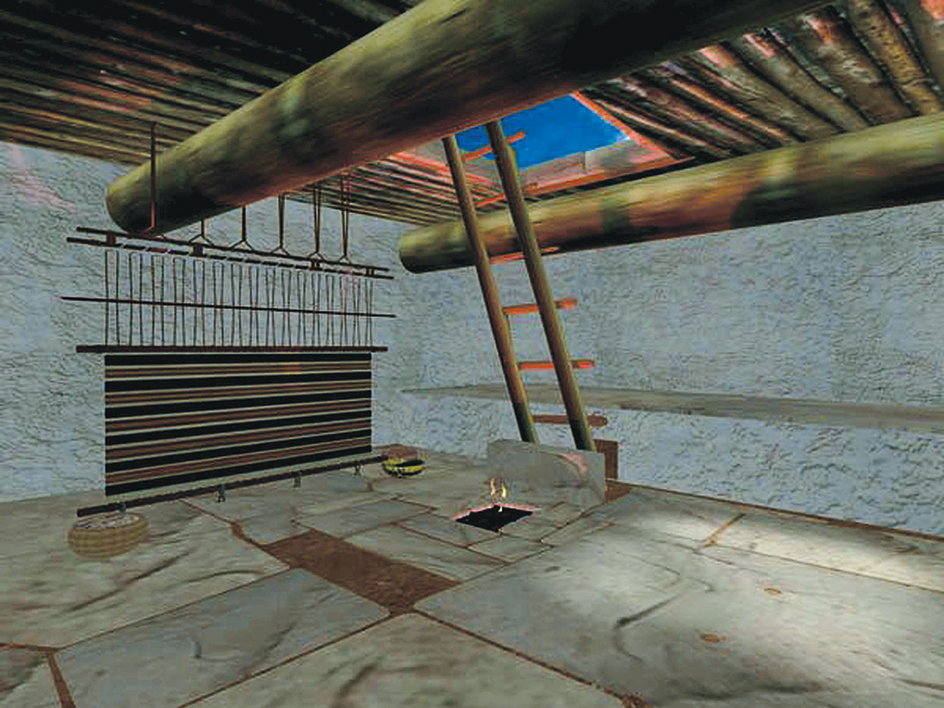
History
Beginnings.
The idea of studying the past through ancient objects has developed gradually. But the most intense interest has occurred in the past 200 years. During the 1700’s, some wealthy Europeans began to study and collect art objects from the times of ancient Greece and Rome. This interest in classical art is called antiquarianism. These first diggers looked only for treasures and threw away ordinary objects.
Also during the 1700’s, European scholars began to debate how long human beings had lived on Earth. Their interest resulted partly from discoveries of primitive stone tools together with the bones of extinct animals. These scholars also knew about the huge mounds and ruined cities in the Americas that pointed to ancient human life there. They realized that humans had a prehistoric past. But the scholars could not decide when and where this past had begun.
The 1800’s
brought a more scientific approach to the study of the past. The great length of human prehistory became widely accepted due to advances in geology and biology. By the early 1800’s, geologists had determined that rock formation resulted from extremely slow processes, such as erosion and volcanic activity. This view, known as uniformitarianism, led most scholars to believe that Earth was much older than previously thought. Then, in 1859, the British biologist Charles R. Darwin proposed the theory of biological evolution in his book The Origin of Species. This theory suggested that humans, like other animals and Earth itself, had developed slowly over a vast time.
By the mid-1800’s, archaeology had become a separate field of study. Evidence of human prehistory accumulated rapidly. Important discoveries included prehistoric lake dwellings in Switzerland and ancient cave paintings in France and Spain. Archaeologists also found part of a prehistoric human skull in Germany. In the late 1800’s, archaeologists began to use techniques of excavation that made it possible to determine sequences of cultural development. In an excavation at Naqada, near Qus, Egypt, the British scholar Sir Flinders Petrie became one of the first diggers to look carefully for all remains, not just for treasures. Another scholar who undertook major excavations at that time was the British nobleman Sir Austen Henry Layard. Layard uncovered remains at Nineveh in what is now Iraq. The German businessman Heinrich Schliemann excavated at Troy in what is now Turkey. 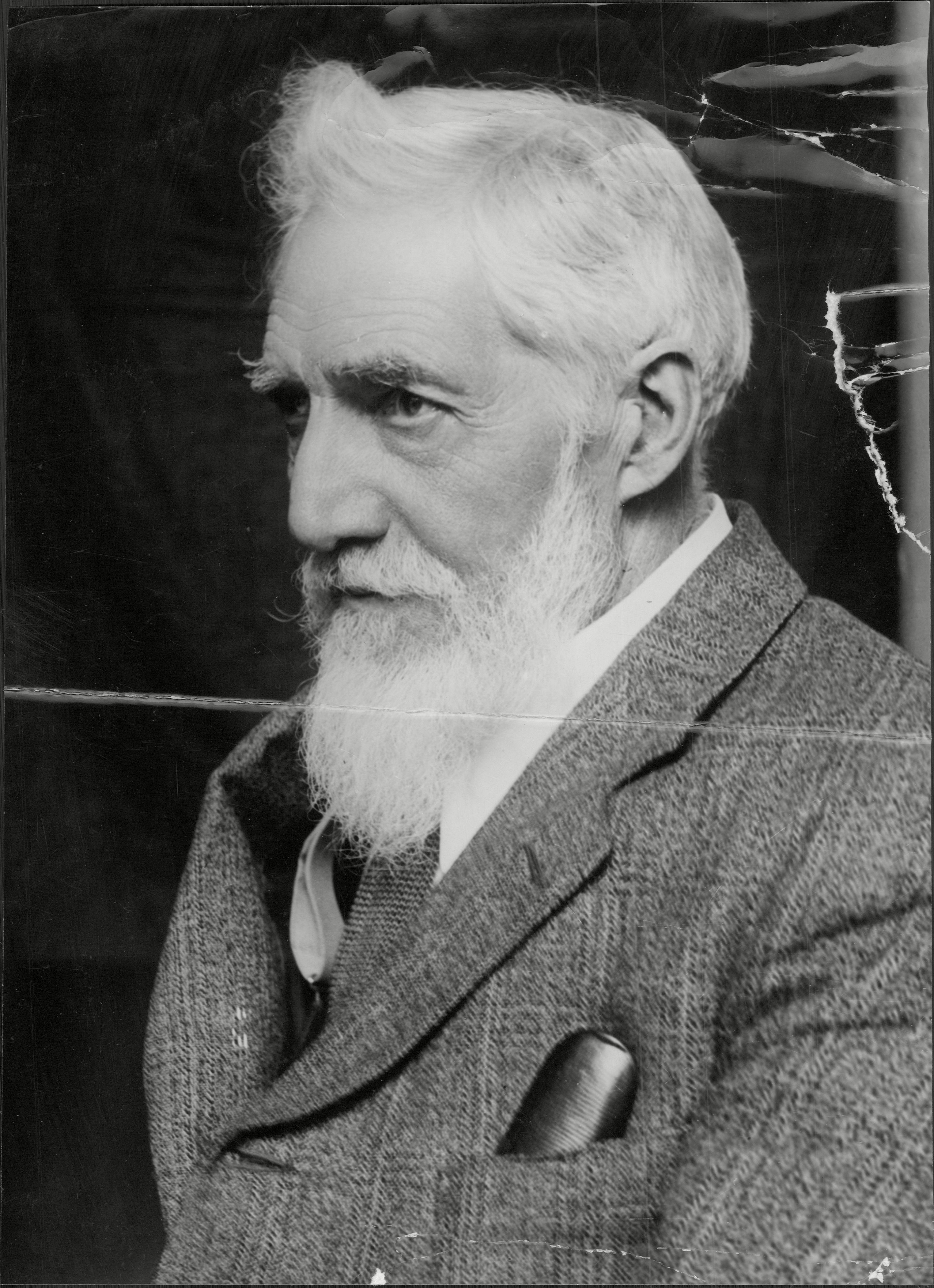
European archaeologists of the late 1800’s focused their studies on ancient European and Middle Eastern civilizations. These were the civilizations described by classical and Biblical authors. American archaeologists, however, could find almost no written records of the civilizations they studied. Partly for this reason, they turned to anthropology for methods of interpreting their discoveries. For example, they studied artifacts produced by contemporary American Indians to help interpret objects from past societies.
Since 1900.
The scope of archaeology expanded greatly during the 1900’s. Archaeologists began to explore the past civilizations of Central and South America, China, Japan, Southeast Asia, and other areas. By the early 1900’s, archaeologists were using stratigraphy to date their finds. During the mid-1900’s, new techniques made dating much easier and more accurate. The most significant of these techniques was radiocarbon dating, developed in the 1940’s by an American chemist named Willard F. Libby.
Great advances in underwater archaeology also occurred. Previously, underwater excavation had been both difficult and expensive. The aqualung and other diving devices invented during the 1940’s enabled divers to move more freely.
Beginning in the 1970’s, space satellites began to the provide valuable sources of data. Photographs taken from satellites helped locate archaeological sites. In 1995, Global Position System (GPS) satellites became fully operational. The GPS satellites produce signals that can be used to calculate exact locations on Earth (see Global Positioning System).
Archaeology today.
A major concern among archaeologists today is the preservation of archaeological sites that have not yet been studied. Many such sites are threatened by construction projects, the expansion of agriculture, and other types of development. Other sites are endangered by theft. Several countries, including the United States, have enacted laws that require government agencies to identify and preserve places that might be of historic or archaeological importance. Today, governments and businesses employ many archaeologists to survey, excavate, and protect endangered sites. This protective process is called cultural resource management.
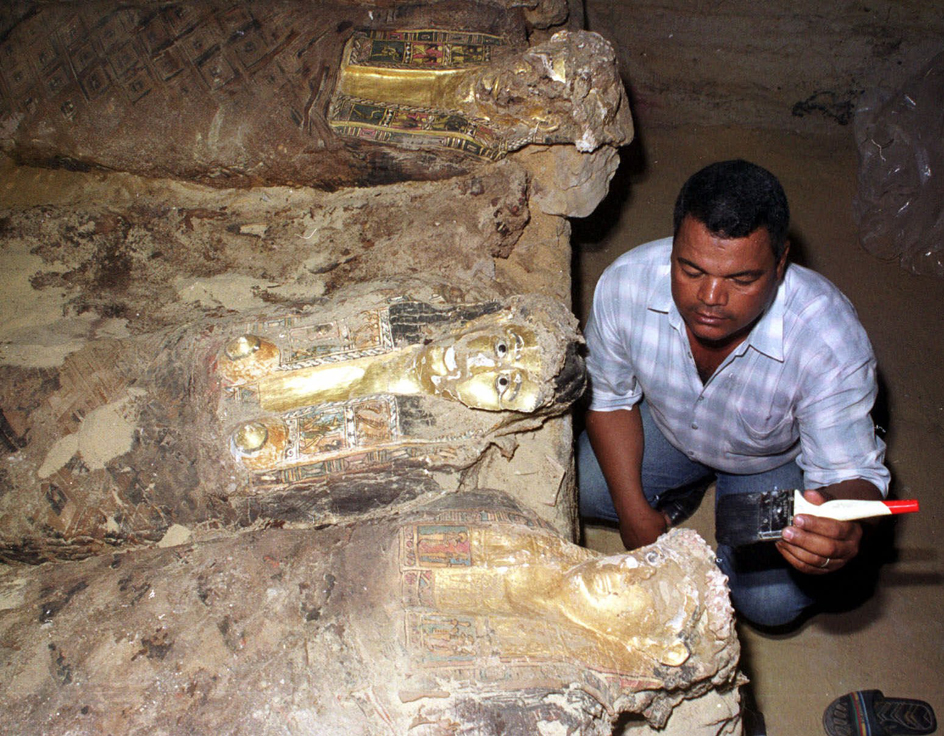
Another major concern is protecting the rights of local peoples whose ancestors left the remains unearthed by archaeologists. Many local peoples argue that the skeletal remains of their ancestors deserve a proper burial. The remains should not be considered specimens for research. They also say that many artifacts were sacred objects used for religious purposes and should be treated with reverence. In the United States, the Native American Graves Protection and Repatriation Act (NAGPRA) of 1990 deals with the ownership of remains and artifacts. The law requires archaeologists to consult with Native American tribes when ancient burials are found in excavations. If the archaeologists find human remains or artifacts and a tribe can prove that it has a valid claim to the items, the scientists must return them to the tribe. Australia, New Zealand, and other countries have similar laws protecting the grave sites of local peoples.
On an international scale, archaeologists seek to halt the illegal sale of archaeological objects. They urge nations to enact and enforce laws to prohibit the import of ancient objects unless an export certificate has been obtained from the country of origin.
Careers in archaeology
Most careers in archaeology require a master’s or doctoral degree. In college, most students who wish to become archaeologists major in anthropology. They also take courses in history, languages, biology, statistics, and geology. In addition, their studies should include experience in excavation. In graduate school, students generally select a geographic area that becomes their research specialty.
Most archaeologists are employed in academic institutions, museum work, or government service. Most archaeologists who teach at colleges and universities also carry out research and publish their findings. Archaeologists who work in museums conduct research, publish articles, preserve and restore ancient objects, and educate the public. Today, the largest number of archaeologists have jobs in the field of cultural resource management. They often work directly for a government agency or for a private business that is hired by the government.
